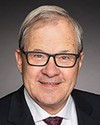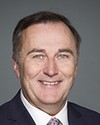Could I talk to a few of those points?
The $10 billion for our department is accrual funding, which means we have actuarials come in, looking at the full projection, the number of clients and the client base, and then we consider a young soldier, sailor, airman or airwoman who is 20 or 25 years old, and we're providing a benefit to them for potentially 60 or 70 years.
When we talk about our funding, some of that $10 billion is in the funding going forward, but be mindful that whatever benefit comes in is a statutory obligation and, every year, as our financial statements will show, we have had to go back and ask for additional funding because the benefits are needs driven. In addition, within that $10 billion, as the minister indicated, is the augmentation of staff.
Going to the whole aspect of wait times, right now, mindful of the 60% increase, the average wait time has been 32 weeks.




